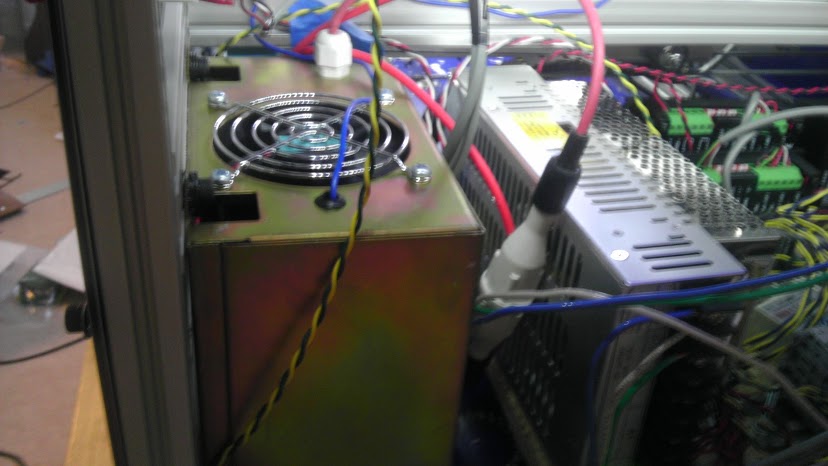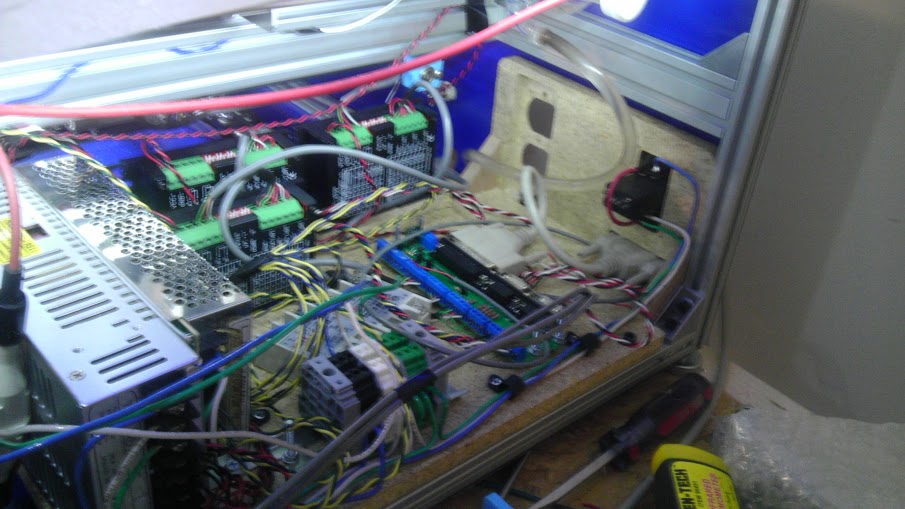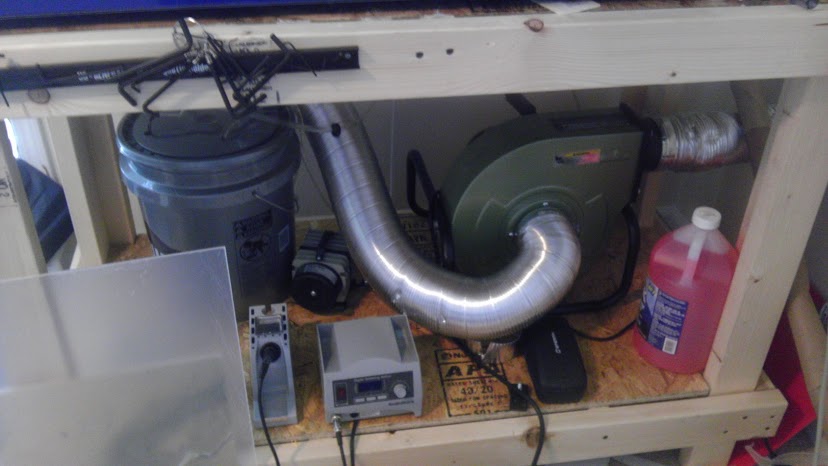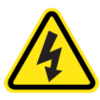Laser Cutter
Zone
16: CNC Lab
Owner(s)
- Freeside
Permissions
For general use by members after they have completed an appropriate training course. Treat this equipment as if it were your own cleaning items off of the top of the machine and around its table after usage.
Restrictions
The laser cutter is a CNC(Computer Numeric Control) machine capable of the following:
- Cutting
* paper * cardboard * plastics up to 1/2" depending on type * craft foam * plywood of certain thicknesses depending on number of layers as well as what type of bonding glue was used * other stuff I haven't yet tried
- Engraving (raster and vector)
* cardboard * plastic * wood * glass * dark stone
Caution
Contrary to popular belief lasers don't melt things. They remove material via a process called sublimation; turning an object from the solid state directly to the gaseous state skipping the liquid stage almost completely.
The laser uses an RF excited CO2 gas laser producing an invisible to the human eye beam at 1090um. Almost everything is opaque to this wavelength and as such if it can sublimate the material it will. This means that if you put *anything* in the path of the laser it'll try to cut it. If it can't cut the material and it doesn't reflect the beam it *WILL* heat it up very very rapidly. The excited gas you can visually see in the tube is kind of the same thing you see in neon signs. 25KV is applied and the gas is excited to the point where it has to release extra electrons and you see this as light. Do not forget that the beam coming out of the tube is completely invisible and completely dangerous.
Specifications
In this picture from left to right you can see:
- 24VDC power supply; large aluminum case
- 12VDC power supply; small aluminum case
- In the back are 3 Keling stepper drivers; black aluminum cases with green wiring terminals
- In front of those are 2 120VAC solid state relays (not wired and currently not present in the enclosure); grey plastic cases
- Breakout board
- Power entry
- Hole for 120VAC duplex outlet
In the second picture you can see the high voltage power supply

The gantry is driven by a single dual-shaft stepper motor. This motor has a driveshaft on either side that goes to a bearing mechanism attached to the Y rails. Nearest this bearing mechanism there is a timing belt pulley on the shaft. The belt rides on this pulley and connects to the gantry's carriage to pull it back and forth. All motion in the laser cutter is established via pulling as you can't push a belt.
The lens carriage is driven by a stepper motor with a timing belt attached to the carriage.
The wiring exists for a Z(table) stepper but it's not currently installed. The large timing gear can be turned by hand to adjust the table up/down.
The laser cutter is supported by several pieces of equipment outside of its own enclosure: From left to right
- The coolant tank stores an amount of water/antifreeze mixture as well as houses the 24V bilge pump to circulate the coolant. Because of the amount of coolant available the temperature increase is not noticeable.
- The air assist pump pumps air into the nozzle attached to the focusing lens on the laser carriage. It's purpose is twofold: keep smoke/debris from out of the line of the laser's beam and off of the optics themselves, and assist the sublimation process by expelling the gasses created
- The fume extractor draws air in from the front of the laser cutter enclosure, across the cutting surface, and out through the back of the enclosure. (Actual equipment subject to change)





